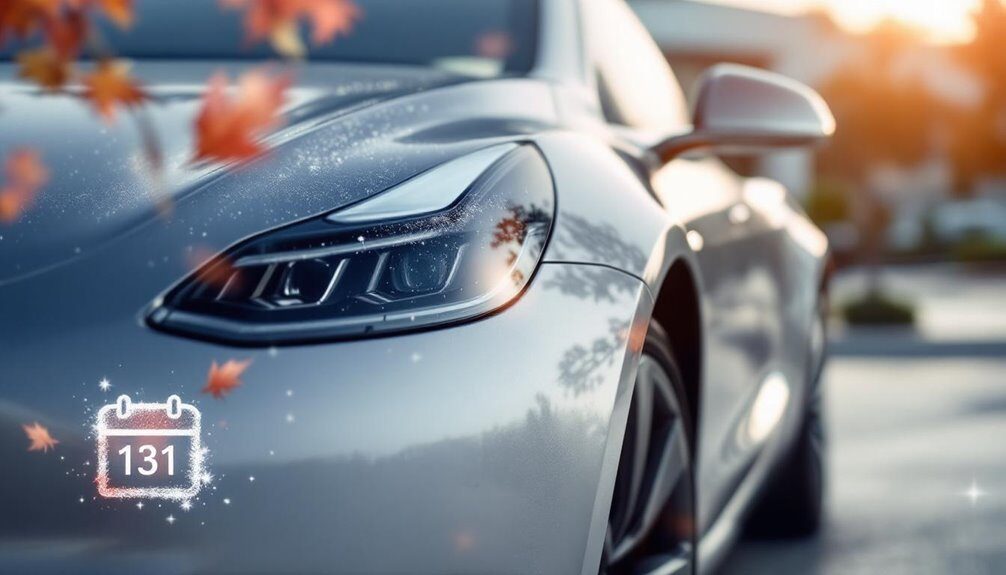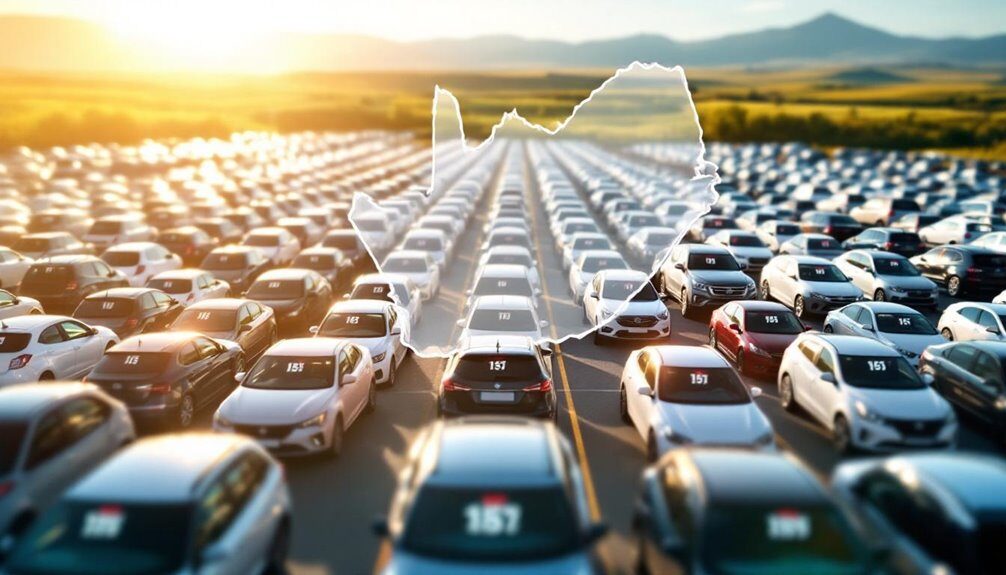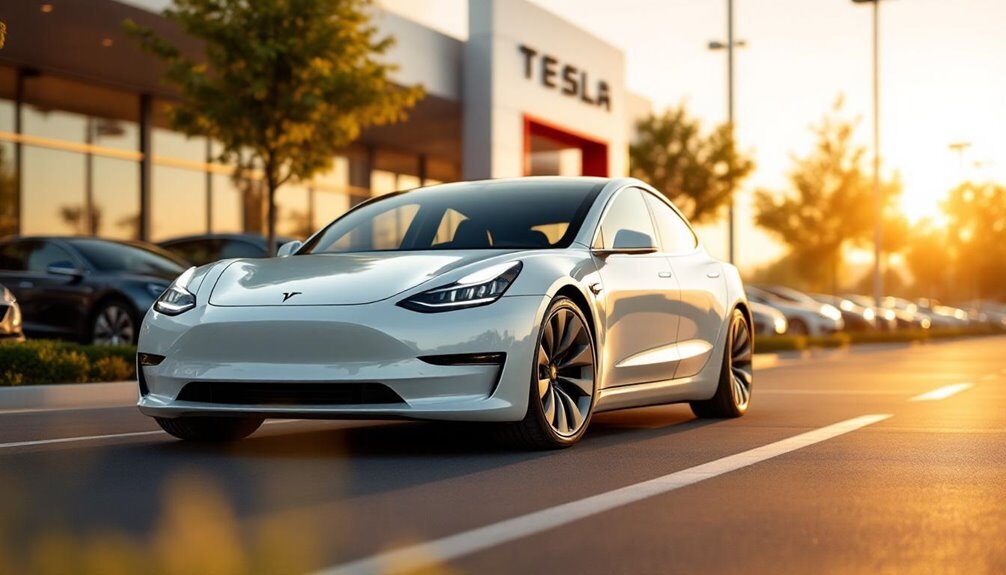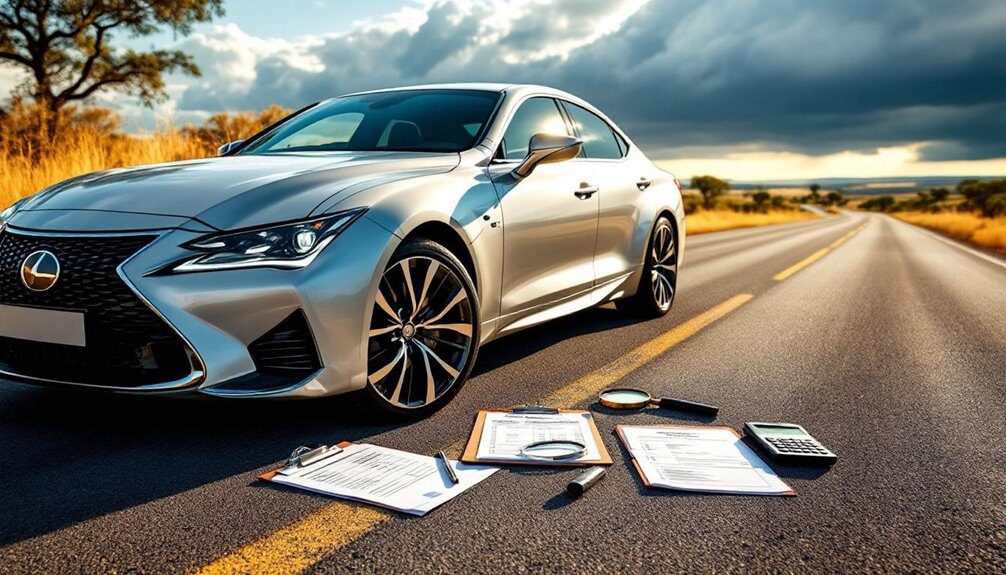South Africa’s fuel-economy gap is brutal. Manufacturers claim one thing; you’ll actually burn 10–30% more fuel in real traffic. The Suzuki Celerio and Toyota Vitz achieve 4.2 L/100km real-world—genuinely solid. Hybrids like the Toyota Corolla Cross Hybrid deliver 4.3 L/100km with serious cargo space. Budget picks under R200k? Suzuki S-Presso and Renault Kwid won’t disappoint your wallet. But here’s the kicker: your driving habits matter more than the badge. Aggressive acceleration torches efficiency; smooth throttle discipline recovers up to 25%. Stick around to reveal which model actually matches your commute.
The Gap Between Claimed and Real-World Fuel Consumption
South Africa’s still working with older fuel-efficiency testing standards, meaning the gap between what the lab says and what your fuel gauge actually shows keeps widening.
You’re looking at 10% to 30% higher real-world consumption than manufacturer claims—sometimes more.
Real-world fuel consumption routinely runs 10% to 30% higher than manufacturer claims—sometimes significantly worse.
Why? Automakers test under ideal conditions. Your commute isn’t ideal. Aggressive driving, traffic, load, road conditions—they all spike fuel use compared to sterile lab environments.
Diesel vehicles get hit hardest. They’re hugely popular here, but the gap between claimed and actual consumption is brutal. With national annual fuel consumption exceeding 30 billion litres annually, the cumulative impact of this efficiency gap across South Africa’s fuel demand means millions of litres are wasted yearly. This waste directly reflects broader market dynamics where petrol and diesel dominate demand, particularly from the transportation sector which accounts for the largest share of fuel consumption. Regular scheduled maintenance services can help optimise your vehicle’s fuel efficiency and minimise wasted consumption. Keeping your engine properly maintained through routine maintenance ensures that fuel systems operate at their designed efficiency levels.
New protocols like WLTP exist worldwide, but South Africa’s adoption remains patchy.
Meanwhile, our fuel still carries higher sulphur levels than Euro 6 standards. That tanks efficiency.
The result? You’re burning more fuel than the sticker promised.
Budget-Friendly Fuel-Efficient Models Under R200,000
When you’re hunting for a fuel-efficient ride that won’t obliterate your bank account, there’s actually some solid options lurking under the R200,000 mark.
| Model | Price | Fuel Economy |
|---|---|---|
| Suzuki S-Presso | R178,900 | 4.4–4.6 L/100km |
| Suzuki Express | R192,900 | 4.4 L/100km |
| Suzuki Celerio | R188,900 | 4.2–4.4 L/100km |
| Toyota Vitz | R189,900 | 4.2–4.6 L/100km |
The S-Presso kicks off at R178,900—cheapest of the bunch—with that SUV vibe everyone’s chasing. The Celerio and Vitz share the same platform, so you’re getting proven reliability. All three Suzuki models in this segment emphasise low fuel consumption as a core value proposition for budget-conscious buyers. Express is no-frills but honest about what it delivers. These aren’t flashy. They’re practical. Real-world numbers typically track close to claimed figures because they’re lightweight and engineered for efficiency, not ego. For added peace of mind with your purchase, consider dealers offering routine maintenance and regular check-ups to keep your fuel-efficient vehicle performing optimally. If you need to stretch your budget further, dealers like Autobahn Auto offer used fuel-efficient vehicles with nationwide delivery options.
Hybrid and Electric Powertrains: Maximum Efficiency
You’re probably wondering if hybrids actually deliver those fancy fuel-consumption numbers in real-world driving—and yes, they do, mostly.
Toyota’s hybrid models crush regular petrol engines with up to 25% better efficiency and seriously slashed emissions, while Chery’s fifth-gen hybrid engine hits 44.5% thermal efficiency and can sip as little as 4.2L/100km when the battery’s depleted.
The catch: your actual fuel economy depends on driving conditions, but stacked against petrol-only cars, hybrids aren’t just marketing smoke.
Hybrid Technology Real-World Performance
How’s this for real-world efficiency: a Toyota Corolla Cross Hybrid guzzles around 4.3 litres per 100 km in test conditions, whilst its petrol twin needs 6.8 litres. That’s a 37% fuel saving. Pretty decent, right?
But here’s where it gets interesting. Real-world city driving pushes consumption to about 6.0 litres per 100 km. Motorway cruising? Around 5.6 litres over extended distances. So yeah, the numbers shift when you’re actually driving, not sitting in a lab.
Regenerative braking’s doing heavy lifting here—capturing energy that’d normally vanish as heat. That means less fuel burned overall and less brake wear. Proper brake maintenance at your local service centre ensures your hybrid’s regenerative system works at peak efficiency.
You’re basically getting paid back every time you slow down. That’s the magic of hybrid tech working for you. When you’re shopping for your next vehicle, expert automotive advice from your local dealer can help you find the perfect hybrid match for your driving needs.
Battery Efficiency Across Conditions
Battery efficiency isn’t one-size-fits-all—it swings wildly depending on whether you’re talking hybrids or pure electrics, and climate matters more than most folks realise.
Hybrids? They’re built tough. Prioritise power density and cycle life for constant charge-discharge grinding. They don’t need fancy charging corridors to work.
EVs are different animals entirely. They’re obsessed with energy content and calendar life, demanding liquid cooling and rigorous cell balancing. Urban? EVs thrive. Sparse charging? They struggle.
Climate crushes both. Hot weather demands sturdy cooling hardware—your battery efficiency tanks without it. Cold climates? Slower chemical reactions drain performance. Thermal durability separates winners from duds. Battery management systems adjust constantly, optimising efficiency based on temperature swings. For battery replacements and maintenance parts, quality assurance standards ensure your vehicle’s longevity. Professional comprehensive automotive care and maintenance specialists can support your battery’s performance across varying South African climates. Where you live and what you drive genuinely reshapes how batteries perform.
Comparing Hybrid Vs Petrol
When you’re shopping for a fuel-efficient car in South Africa, the hybrid versus petrol showdown isn’t even close—at least not in the city.
Here’s the real deal:
- Hybrids crush petrol cars in stop-and-go traffic. The Toyota Corolla Hybrid burns 3.5–4.3 L/100km whilst the petrol Quest guzzles 6.4 L/100km. Regenerative braking recovers energy you’d otherwise waste.
- Petrol’s only advantage? Motorway cruising. Steady speeds mean the electric motor sits idle, so petrol and hybrid efficiency converge. But hybrids still edge ahead.
- Urban mixed driving reveals the truth: hybrids use 40–50% less fuel than comparable petrol models in typical South African conditions.
Small petrol cars like the Suzuki Celerio manage 4.2 L/100km, but they’re still fighting hybrid physics. The maths doesn’t lie.
Compact City Cars for Urban Driving
Let’s cut through the noise: you’re sick of petrol prices, and compact city cars aren’t just some trendy option—they’re the smart move for anyone dodging Johannesburg’s gridlock or steering through Durban’s tight suburbs.
The Suzuki Celerio and Toyota Vitz both hit 4.2 L/100 km. That’s real-world efficiency. The S-Presso? 4.4 L/100 km with SUV swagger.
Want premium vibes? Fiat 500 sips around 4.8 L/100 km. The Renault Kwid sits at 4.9 L/100 km—lightweight, practical, urban-friendly.
These cars aren’t just economical; they’re built for tight parking spots and congested streets. Compact dimensions mean you’re not wrestling with size in cramped city environments. You get reliability without the fuel-bill shock. To keep these efficient vehicles performing optimally, schedule regular tyre rotations and balancing with qualified technicians. However, keeping your vehicle in top condition requires regular maintenance, including brake servicing to ensure your compact car remains safe and dependable on city roads.
Family Saloons and SUVs With Practical Fuel Economy
Family cars don’t have to drain your wallet at every petrol station. You’ve got solid options that combine space, comfort, and real fuel efficiency.
Family cars don’t have to drain your wallet. Find space, comfort, and fuel efficiency without breaking the bank.
- Toyota Corolla Hybrid – Sips fuel at 3.5–3.9 L/100km. Quiet, reliable, and built for families who actually care about their bank balance.
- Toyota Corolla Cross Hybrid – The SUV that won’t bleed you dry. 4.3 L/100km with cargo space that doesn’t sacrifice economy.
- Renault Kwid 1.0 Zen – Budget-friendly at R196,999. Delivers 4.7–4.9 L/100km and stretches roughly 600km per tank.
The Suzuki DZire and Toyota Camry Hybrid round out practical alternatives. These aren’t compromises. They’re honest family vehicles that actually perform as promised.
How Driving Habits Impact Fuel Efficiency
You’re probably thinking your car’s fuel economy is locked in stone, but here’s the thing—how you drive matters way more than you’d guess.
Aggressive acceleration and speeding absolutely tank your efficiency; hit the pedal hard and you’re burning an extra 10-40% more fuel in city traffic alone, plus another $0.18 per gallon for every 5 mph you cruise over 50 on the motorway.
The kicker? Smooth, steady driving can claw back up to 25% of those losses without you doing anything fancy.
City Driving Vs Highway
When you’re crawling through city traffic, your fuel tank’s emptying faster than you’d think—and there’s a reason why.
Here’s what’s actually happening:
- Stop-start cycles drain fuel relentlessly – Frequent braking and acceleration from standstill forces your engine to work harder, guzzling fuel like it’s going out of style
- Motorway driving maintains consistent speeds – Steady velocity between 145-160 km/h keeps your engine in top gear, sipping fuel instead of gulping it
- Idling wastes money you’re not even driving – Vehicles stationary over 60 seconds burn fuel doing absolutely nothing
City driving throws constant speed variations at your engine. It’s exhausting.
Motorway conditions? Your car operates efficiently, minimal gear adjustments, reduced mechanical strain.
The difference is genuinely staggering.
Urban environments force repetitive acceleration-deceleration cycles that city drivers just accept as normal.
It’s not.
Motorway miles are where your vehicle actually performs.
Aggressive Acceleration Reduces Efficiency
Aggressive acceleration’s where your fuel efficiency goes to die. When you floor it, your engine gulps fuel like it’s going out of style—burning 10% to 40% more in stop-and-go traffic alone.
That hard acceleration? It demands massive energy just to overcome inertia and air resistance. Your wallet notices immediately.
Here’s the thing: those sudden bursts don’t just drain your tank faster. They hammer your engine, tyres, and drivetrain with mechanical stress that translates into pricey repairs down the road. Pair aggressive acceleration with late braking, and you’re fast-tracking brake replacements too.
The maths is brutal. Drivers who ease into acceleration instead? They’re pocketing around 20% fuel savings. Smoother driving means less wear, lower emissions, fewer trips to the pump. That’s not just efficient—that’s smart ownership.




